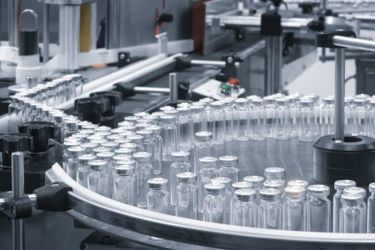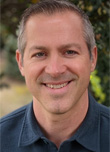Unboxing Genentech's New Clinical Supply Center
A conversation with Michael J. Greening, Christian Randecker, and Dante Lee, Genentech

Bioprocess Online and ISPE are collaborating to showcase the 2023 ISPE Facility of the Year sponsor company winners. In a limited series, we hear from industry leaders at three companies, Genentech, Serum Institute, and Takeda, which all earned awards.
Genentech’s Clinical Supply Center, which opened in 2022 in South San Francisco, earned the company an ISPE Facility of the Year Award in the Pharma 4.0 category.
ISPE trademarked the term “Pharma 4.0,” which, in short, refers to a mentality of ongoing innovation with the integration of digital and automated technology. With the rise of personalized medicine, Genentech leaders discovered they needed a toolbox that could transform quickly to produce small clinical batches of biologic drugs.
Of course, no biotech manufacturer plans to stay at the clinical batch level forever, but scaling often presents serious bottlenecks. So, Genentech built the CSC with commercial manufacturing capabilities.
And finally, ISPE also picked Genentech for the CSC’s built-in sustainability. The site minimized water consumption with single-use plastics and waste consumption through complex recycling programs, among other green design elements.
To learn more about what it takes to earn status as a Pharma 4.0 biotech, we asked Genentech’s U.S. head of project delivery, Michael Greening, and CSC senior directors Christian Randecker and Dante Lee about the CSC and the strategy that led to the win.
Bioprocess Online: Personalized medicine often depends on speed. Advanced technology aside, the CSC is still centrally located and, presumably, thousands of miles away from many of the patients who need the medicine it makes. How did logistics play into the site selection and Genentech's bigger plan to get medicine to patients?
Randecker: We believe we can increase the speed with which we deliver our medicines to patients by co-locating our innovative research and development function and Clinical Supply Center on our South San Francisco campus.
Co-location allows us to get from DNA to IND as fast as possible by consolidating all functions necessary within the same organization and location to enable speed but also agility. This occurs by allowing our team to delay decisions as late as possible, eliminating hold times between groups and expediting processing at risk. Through this strategy, we postpone distribution challenges until we have the finished product.
Bioprocess Online: Sustainability was a big part of the CSC's design. Talk about the analysis that informed decisions on single-use bioreactor liners, paperless operations, and renewable energy.
Lee: Our parent company, Roche, sets ambitious goals for our business — including design standards — across the globe. These goals go beyond renewable energy and, for example, include energy modeling of the facility, choice of refrigerants, and recycling during construction, among others.
We completed a life cycle assessment, which is an industry-recognized approach to understand the sustainability impact of our facility for all materials “cradle to grave.” For the purposes of comparison, when benchmarked against a stainless steel 2,000L facility with the same capacity as our Oceanside single-use technology facility, we use 25% less energy than a traditional facility of this scale and 28% less water since we don’t have large stainless assets.
We line the bioreactors with single-use soft plastic bags, so the cell material doesn’t touch the metal. This eliminates the need to clean and sterilize the bioreactors after each manufacturing run, which significantly reduces the amount of water, steam, and chemicals we use. This innovative approach means the Clinical Supply Center uses 28% less water compared to our other facilities, which is especially important given potential drought conditions in California.
Of note, nothing from our facility goes to landfill. We have a collaboration with our local waste management company to bring our solid waste to a nearby facility to incinerate for energy. The waste-to-energy process takes our waste and combusts it to generate steam for electricity generation. This process combined with our reductions in water and energy translates to a 14% lower carbon footprint.
We also have several recycling programs in place for other items like gloves and cardboard, a wash and reuse program for safety glasses, and many upcoming pilots for soft plastics to reduce our solid waste stream.
We have another collaboration with a local hard plastic recycling company, where we have established a true circular economy. Our hard plastics are sent to this company and then are converted to items like pipette tips and centrifuge tubes that we repurchase for use across our organization.
Bioprocess Online: Describe the challenges that come with building a state-of-the-art facility. If you had to do it again, what would you do differently?
Greening: It’s critical to strike the right balance between incorporating cutting-edge technology and designs to influence the future state with the need to complete the project on time and on budget. Leadership plays an important role in coaching the team through these challenges in order to maintain focus and energy —and achieve the ideal outcome.
Bioprocess Online: Does new construction — a fresh start — lend itself to better use of emerging technologies like artificial intelligence and continuous manufacturing?
Greening: While these emerging technologies could be applied to any new facility, we did see some advantages with a new build. Typical challenges we see include a lack of data or power available at the location where you may want new technology and analytical tools. We adopted the concept of uniform process cells, in which each utility panel provided not only the requisite power, data, and utilities required for the current technology but sufficient to enable addition of new technology without further facility modifications.
Bioprocess Online: What lessons did you take away from this build that other biotech companies can learn from?
Greening: Timely decision-making is key, and decisions are easier when the team builds trust and works together toward a common goal.
Our executives were clear on their key goals: be bold and push boundaries, build a facility fit for the next 20 years, and through this enable efficient product transfers.
We’ve learned a lot throughout this process. Our key takeaways include the importance of building assets for a future state rather than the current state, empowering creativity, and taking sensible risks. Lastly, there is a wealth of talent and ideas in your organization — pick a team with your ultimate goal in mind.
 About the Experts:
About the Experts:
Michael J. Greening is Genentech’s regional head of project delivery responsible for executing large manufacturing capital projects in the United States. Michael is a chartered chemical engineer with over 30 years’ experience in engineering and construction across four continents. His experience includes chemical, pharmaceutical, and biopharmaceutical industries working both for the owners’ organizations and the architectural, engineering, and construction companies.
 Christian Randecker is a senior operations director at Genentech's CSC. He has worked for the company since 2000 when he began as a bioprocess technician. He earned a bachelor's degree from James Madison University and an MBA from Babson F.W. Olin Graduate School of Business.
Christian Randecker is a senior operations director at Genentech's CSC. He has worked for the company since 2000 when he began as a bioprocess technician. He earned a bachelor's degree from James Madison University and an MBA from Babson F.W. Olin Graduate School of Business.
 Dante Lee is a senior director at Genentech's CSC. He has worked for the company since 1998 when he began as a bioprocess technician. Lee earned his B.S. from the University of California Davis and his MBA from St. Mary's College of California.
Dante Lee is a senior director at Genentech's CSC. He has worked for the company since 1998 when he began as a bioprocess technician. Lee earned his B.S. from the University of California Davis and his MBA from St. Mary's College of California.

